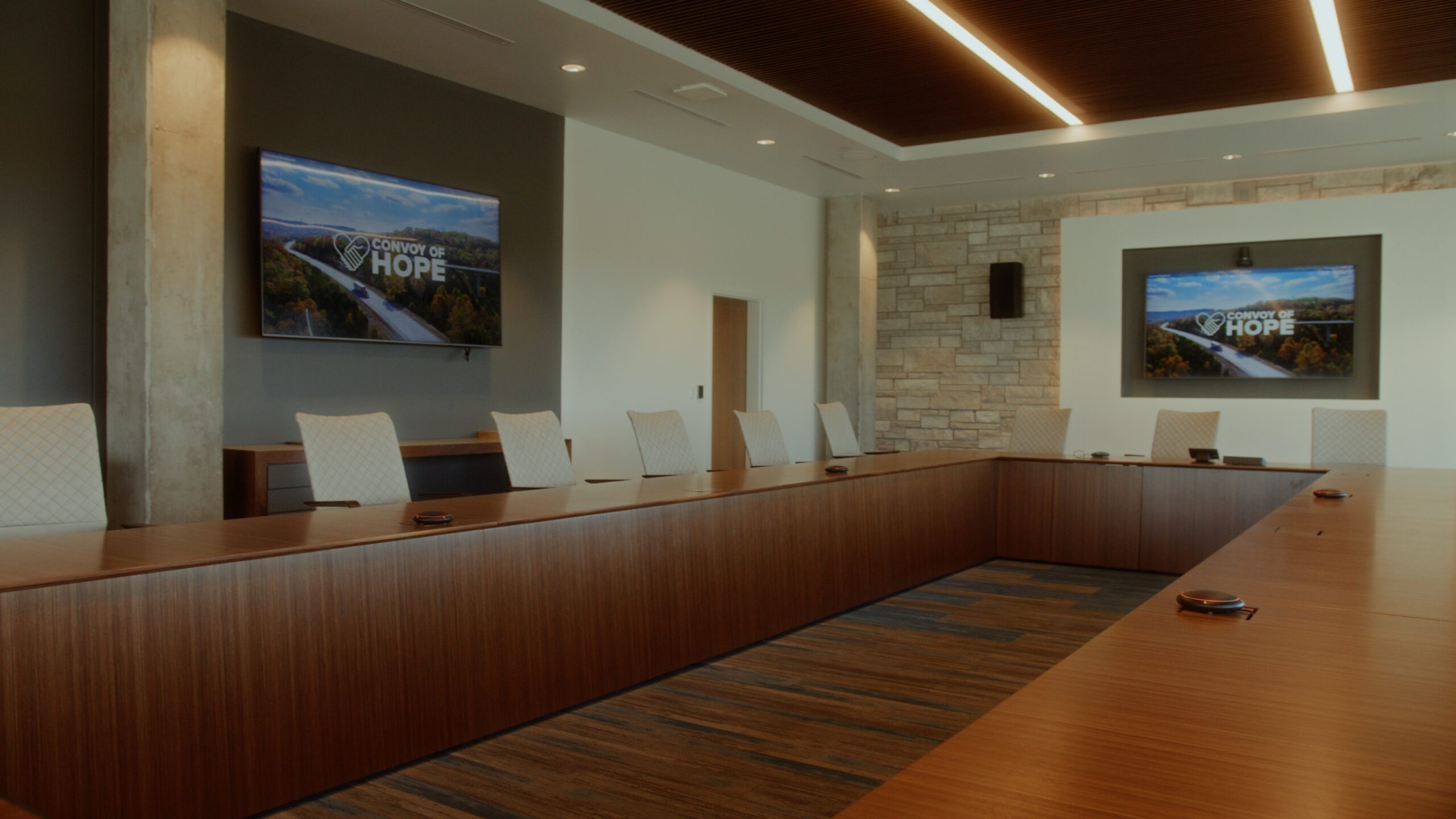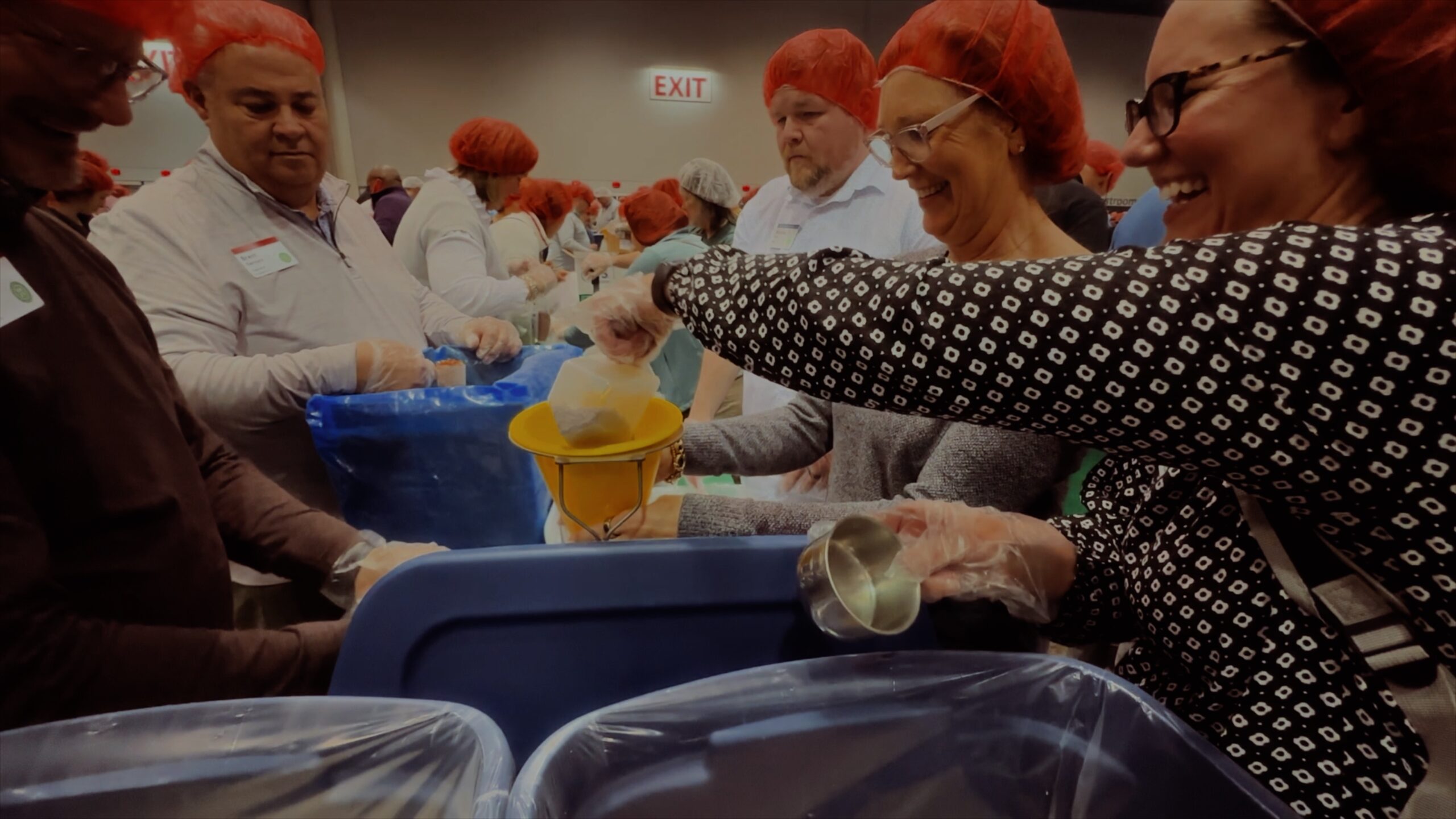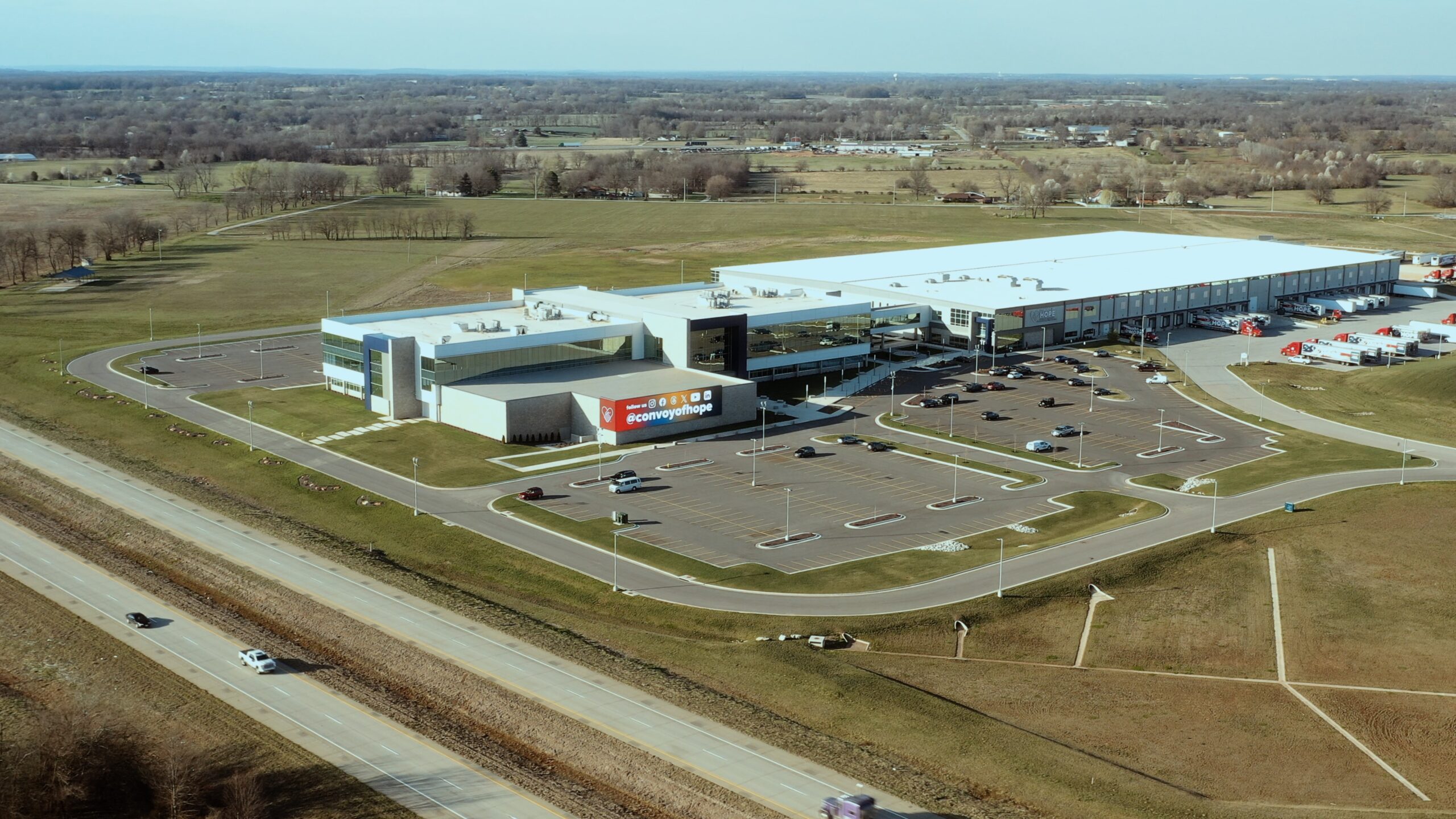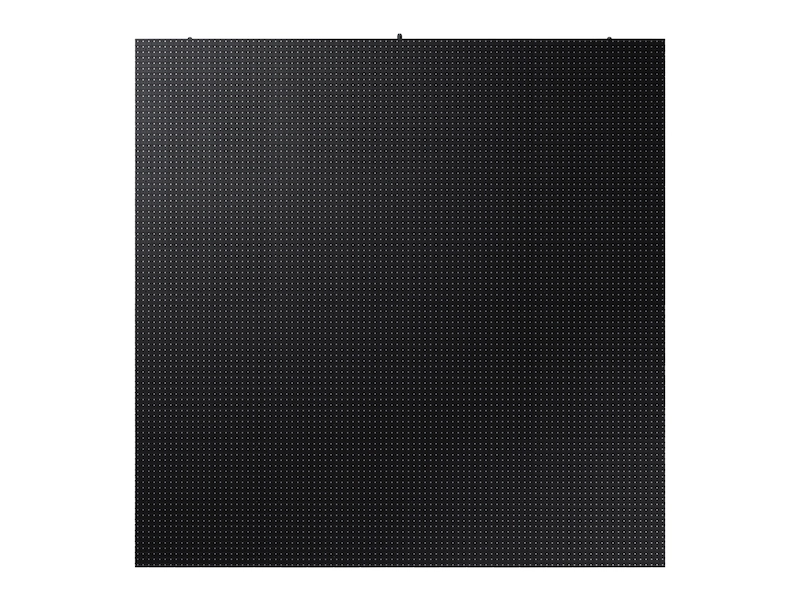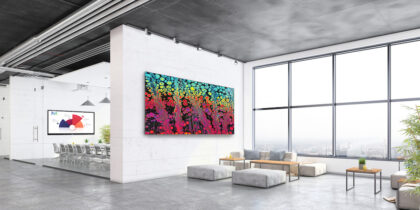
The Challenge
Convoy of Hope, a humanitarian, faith-based organization located in Springfield, Missouri, aims to change lives through kindness. Its work includes feeding more than half a million hungry children every school day, helping disaster victims and partnering with churches, businesses and other civic organizations to do global community outreach. Like other nonprofits, Convoy of Hope constantly strives to demonstrate how they use contributions to change lives. To educate and inspire the local community, it needed to find unique ways to share its story and showcase its important work.
The Solution
Seeing is believing, as the adage goes, and the organization wanted to display images and videos to communicate the work they do with potential donors, volunteers and those in need. Knowing that a new headquarters and training center was in the works, Convoy of Hope worked with Samsung to design and install a massive 105-foot-by-20-foot outdoor LED display as part of its plan. The organization also designed the building’s interior with communication in mind, purchasing and installing 88 Samsung displays in various locations across the 200,000-square-foot building.
“That screen has drawn them in. They want to know the Convoy of Hope story, and that’s a huge win for us.”
– Ethan Forhetz, Vice President of Public Engagement at Convoy of Hope
The Results
The new headquarters has a wraparound LED display visible to motorists driving on a major thoroughfare. The videos projected provide a visual representation of the work Convoy of Hope does — in its own community as well as the world at large. Today, the organization uses its super high resolution, 10-millimeter Samsung outdoor LED to display three-dimensional anamorphic content — 3D images. This helps the organization elevate its brand, draw attention to its mission and educate people about volunteer work. It also helps connect the organization to its Springfield neighbors and the many people passing through the area.

About Convoy of Hope
Convoy of Hope is a global, faith-based organization that serves vulnerable communities. By partnering with local churches, businesses, civic organizations, and government agencies, Convoy has strategically offered help and hope in more than 130 countries around the world. Since its founding in 1994, Convoy of Hope has served 250 million people and counting. Visit convoyofhope.org to learn more.
The Challenge
Showing the world what hope looks like
Fighting poverty and hunger requires dedicated people with vision and imagination. Convoy of Hope, a faith-based nonprofit in Springfield, Missouri, has what it takes to complete the mission. But to educate and inspire the local community about their transformative charity work, they needed an innovative way to share their story. Fortunately they were starting with a blank slate as they built their new headquarters.
“Convoy of Hope is located right on a major highway in town and gets a lot of traffic, and we wanted to do something that would be able to put our message out there — something that the people of our area could be proud of,” Ethan Forhetz, vice president of public engagement, explained.
The 30-year-old organization has a lot to highlight. Since its inception in 1994, Convoy of Hope has served vulnerable communities in the United States and in 130 countries across the globe. With the right cutting-edge technology, they would not only be able to showcase their impressive work but also prove they have invested in themselves and are here to stay. When people see, for example, the aftermath of a hurricane and how the volunteers acted as first responders, it has a lasting impact.
The Convoy of Hope team had a lot to consider when it came to finding the right technology to display the charity’s work. They needed technology that would future-proof their investment. The organization didn’t want to worry about upgrading or replacing equipment for a while, said Christian Lamb, live production and internal communications director at Convoy of Hope.
“Moving into this building, we didn’t want to have to update anything three years from now and be kicking ourselves down the road. We wanted to put in an infrastructure that we knew could last us five or 10 years … [and] allow for expansion.”
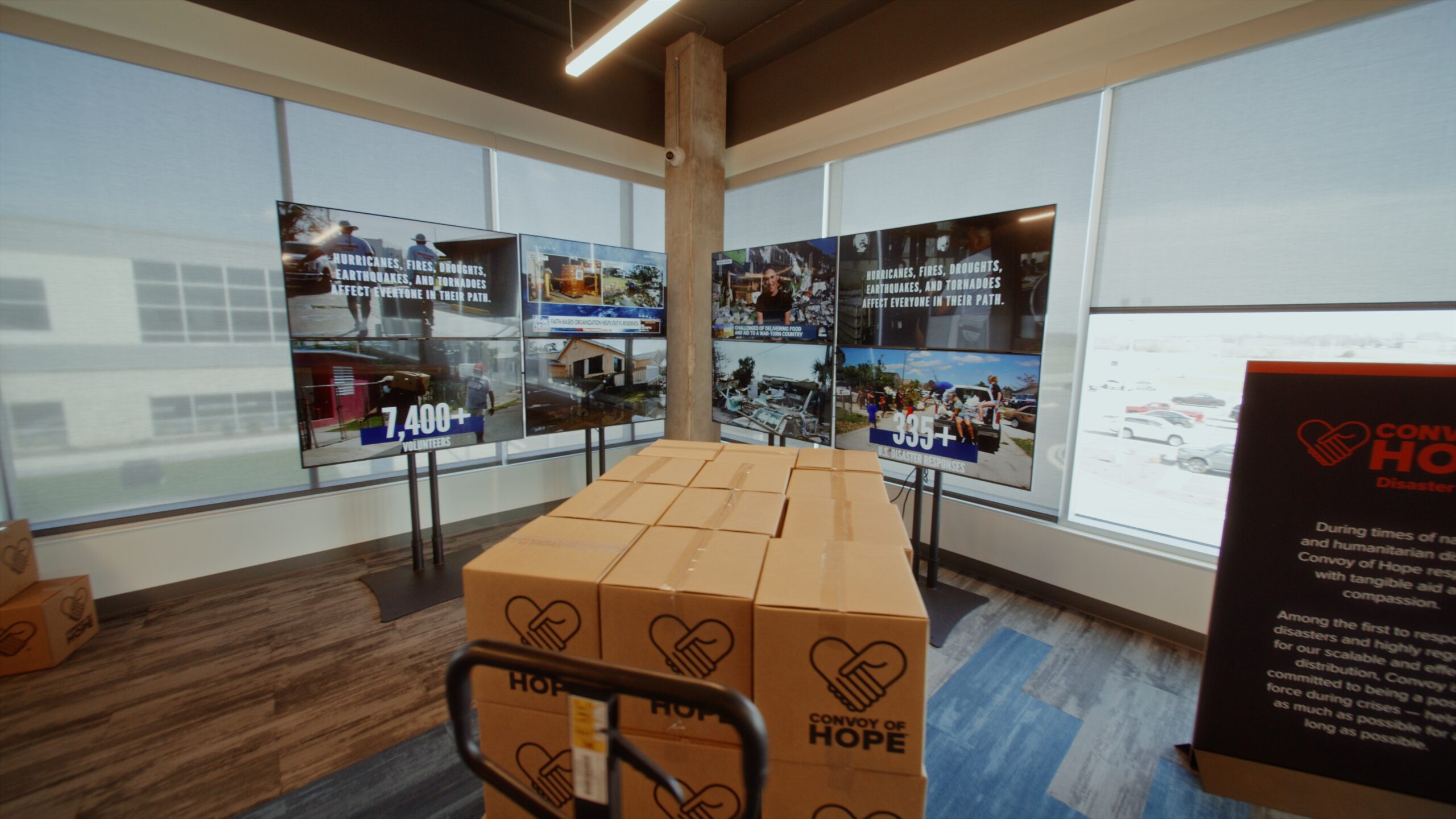
The Solution
Samsung outdoor LED lights up Convoy of Hope's new headquarters
A new global Convoy of Hope headquarters and training center had been in the works for some time. The organization’s 240 acres in the Springfield area was already the home of its world distribution center, but its 285 employees were spread out in three different buildings around the city.
When it became clear that the charity could raise the money to build the new headquarters, the management team started brainstorming how they could use the space most effectively, said Lamb.
“Having outdoor LED was always something that we had been looking at. From the very first renderings that we were working on with the architect, it was always something that we wanted to incorporate,” he said. “Our land is right on the corner of two of the major highways in our region. Because of that, we knew we wanted to be very strategic about the front-facing communication opportunities we had there.”
Convoy of Hope President Hal Donaldson had seen video displays wrapped around buildings in South Korea and New York City, so they decided to use those installations as inspiration. After sending out requests for proposals to several technology providers, Convoy of Hope chose Samsung for a variety of reasons, said Lamb.
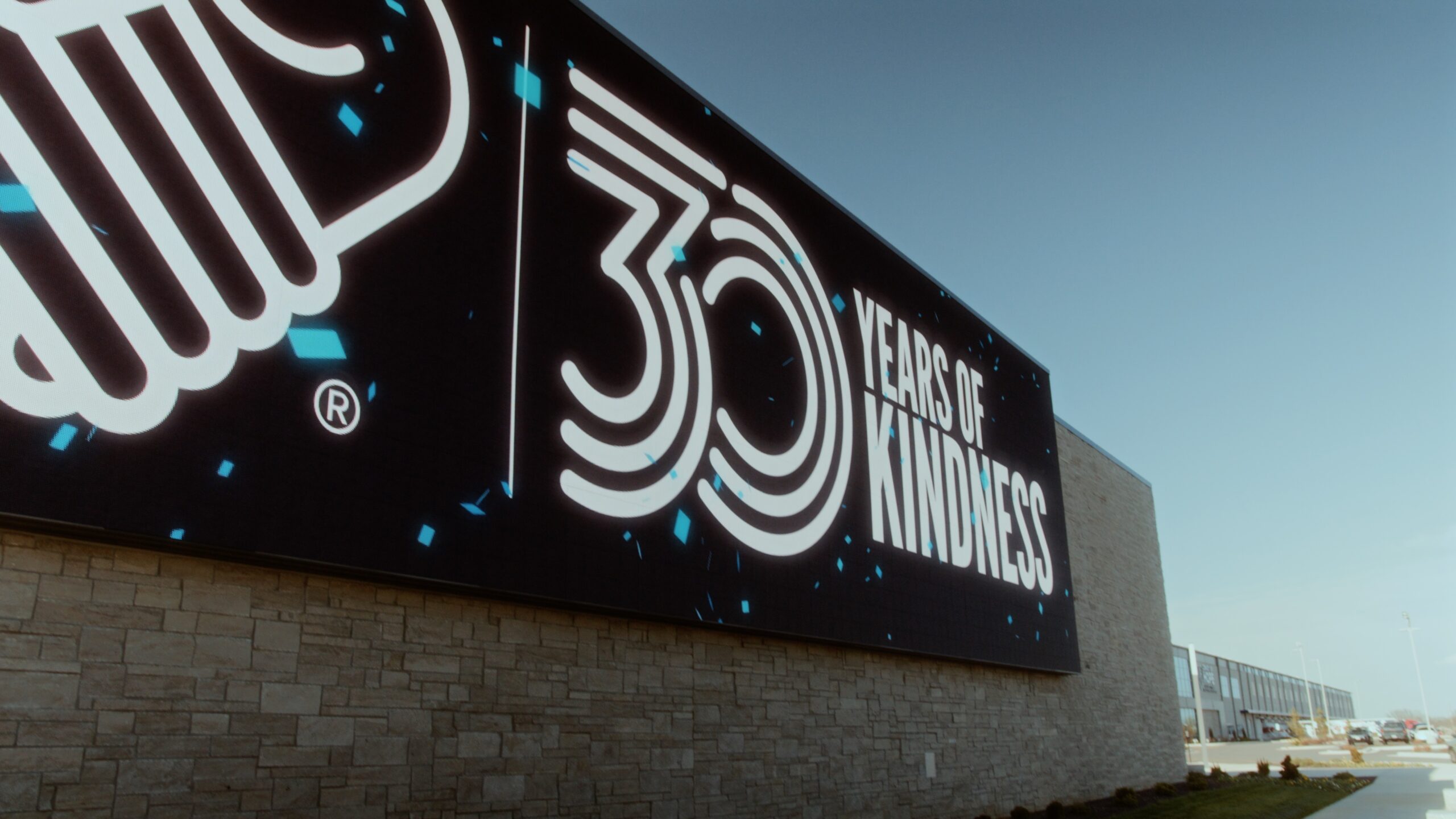
“We were looking to be able to do something that would allow us to do 3D anamorphic content,” he explained. “Samsung came to us being able to say, ‘Hey, we can do that with great technology and for a great price.'”
Samsung partnered with Convoy of Hope’s architects and designers, installing a 105-foot-by-20-foot outdoor LED display that wrapped around the headquarters and could display 3D anamorphic content. To achieve Convoy of Hope’s vision and truly showcase the charity’s work, Samsung advised them on which display to select and how to customize it. Melaney White, channel account sales manager at Samsung, worked with teams of engineers to perfect the display design.
Given the close pedestrian traffic and nearby parking, they needed to adjust the LED display to ensure the video would have the most significant effect. For example, Convoy of Hope originally requested a rounded corner. Based on guidance from the Samsung team, they decided a tighter 90-degree design “was better suited for this application,” said White. In addition, they upgraded the LED board from the requested 16mm pixel pitch to 10mm for a more impressive resolution. Samsung was even able to improve the display’s electrical specs to support the permit and electrical requirements of the city.
From recommending the best aspect ratios and fit processors for the large size and scale of the board to suggested imagery and content management ideas, Samsung took a hands-on approach. When it came time for installation, Samsung worked with the installation partner Bootheel Signs to help set up the large display. The creative team worked with Convoy of Hope’s creative department, providing them the technology and expertise to jumpstart its design work. They created a 3D template box so Convoy of Hope could display more 3D anamorphic content and have a bank of creative visuals to pull from.
“We have great designers and animators on our team, but this was a new front for them. Working alongside the Samsung creative team and beginning that journey together saved us insurmountable amounts of time,” Lamb said.
The Technology
XPR-S
Samsung’s XPR Series fine pixel pitch outdoor LED signage is built for reliable outdoor operation and clear visibility in virtually any weather or lighting conditions. The 10.4mm pixel pitch delivers exceptional picture quality.
The Results
Convoy of Hope finds depth in dimensions and leaves a lasting impression
Today, people visiting the building or simply driving by on the highway instantly know what Convoy of Hope does and why its work matters, said Lamb.
“The LED lets us educate people about the work that we do. Showcasing the skylines of Kenya or the slums that we’re privileged to work inside of in Mathare Valley, showing the places we go, the work we do and the people we serve. Showing the faces of the children that we get to feed, the women that we get to empower, the farmers that we get to work alongside,” is just so important, emphasized Lamb.
The display is also built to last — Convoy of Hope doesn’t have to worry about upgrading the equipment anytime soon. And with its longevity comes years of wow factor.
“We can see a marked difference from when we set up that screen and got it running with our videos to now,” explained Forhetz. “What has happened in that time period is more people are interested in Convoy of Hope, and more people that drive by are curious. They call us with questions [or] to set up a tour because they want to come and see inside. That screen has drawn them in. They want to know the Convoy of Hope story, and that’s a huge win for us.”
In addition to the outdoor LED wall, Convoy of Hope benefits from other Samsung display technology. There are 88 Samsung displays peppered throughout the new building. These are used for a variety of public- and employee-facing tasks, Lamb said. For example, the displays in the organization’s common areas are used as digital signage.
“In areas that are office spaces, the displays help communicate to our team members things about new team members that are coming up here, our work anniversaries — important things … about the work we do,” he said. “We also use Samsung displays inside all of our conference rooms, so whether we’re using Apple TVs or Zoom, all of that functionality is going through the Samsung displays.”
Displays in public areas also function the same way the giant outside LED does, showcasing the people that Convoy of Hope serves by telling their stories visually. This is especially important because it provides an emotional connection for people who may be located thousands of miles away.
“We have lots of tours that come through — school kids, charter buses, donors, partners of our organization come through,” explained Forhetz. “We take them on tours, and it’s a great way to continue to tell the message of Convoy of Hope in a way that stories are told these days. Everything’s digital.”
In addition, Convoy of Hope saves money by not having to print anything out and saves time as content can be changed or updated in seconds. They can also tailor every message to specific visitors, which helps with fundraising. Images and videos are swapped in and out based on who’s coming into the building and what interests them most.
Today, the Samsung video display gives Convoy of Hope what Forhetz calls an “attraction in and of itself.”
“When I first saw it, it was a wow moment. I just stared at it for the longest time. I pulled my car in and just watched it because it was mesmerizing,” he recalled. “It was not only so large, such a huge screen. But also the quality of it was really incredible, even up close, because our parking lot is right there. You park 20 feet from it, 30 feet from it, and it still looks amazing.”
Lamb agreed, adding, “The Samsung LED wall allows us to showcase the work that we do with an element of creativity that will hopefully leave a lasting impression on the people we’re trying to connect with.”
